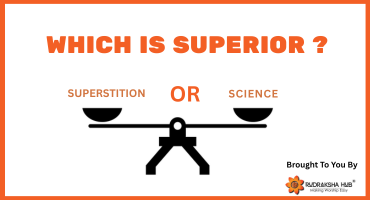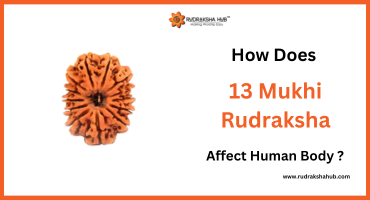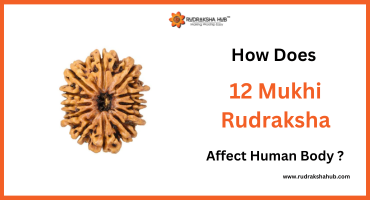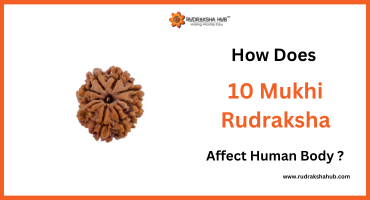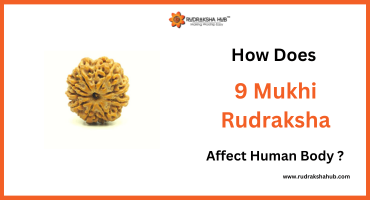
Biography of Adi Shankaracharya
Indian History is full of philosophers, saints, fighters, and great men. Adi Shankracharya was an Indian philosopher who is famous as "Guru Shankracharya” and because of his work on the principle of “Advaita Vedanta." He was also the founder of Four Mathas (monasteries) who has the primary purpose of helping in chronological developments, resumptions, and circulation of the Advaita Vedanta.
He left worldly pleasures at a minimal age, and he traveled a lot of the Indian subcontinent, where he defeated various Hindu philosophers or thinkers in which some were conformists. Some were rebels who disagreed with the Hindu religion. He was the believer of Advaita Vedanta's principle who utters for the unity of Atma (soul) and Nirguna Brahman (supreme soul), also known as "Brahman without attributes." But the Advaita Shankara gave similarity with Mahayana Buddhism, which was the reason behind various Hindu Vaishnav called him "Crypto Buddhism." But Advaita Vedanta traditional even Shankara himself rejected this saying Advaita Vedanta is all about Atman, Anatta, and Brahman, they believe Atman (soul Self) exist. But Buddhism relies on "No soul, no self."
Even after centuries of his death, there are various influencers of him, and more than 300 books are connected to his principles. We can also say that modern Hinduism has little influence on his thoughts, but there are thousands of questions on his theories and code.
Birth
He was born in a low-income family at Kaladi, present-day known as Kerala, India. It is believed that his parents Sivaguru and Aryamba, were the devotees of Shiva and prayed for a baby from him, and in very few days, Shiva fulfilled their wish by blessing them with a boy. It is said that they dreamt about Shiva that night, who told that he was going to take birth as their child, and this is why they kept their baby's name Shankara on Shiva’s name. Baby Shankara lost his father at the age of 7, and this is why his mother was his teacher who taught him all the Veda and Upnishads. There is no clear idea about when he was born, as few believe he was born in the 8th century CE, whereas few said he was born between 700-750CE. Still, if we follow the date of the foundation of mathas, they were in 400-500 BC, which made people believe that he was born in 509 BC and founded the Mathas before his birth, which is not referred to by his scholars. As they say, there were 5 Shankara's who were Adi, Kripa, Ujjvala, Muka, and Abhinava. It was Abhinava who was a supporter of Advaita and promoted that. In contrast, Adi Shankra was the founder of Matha, born in 400 BC, but there is no clear proof of these theories, so we can't describe the precise date of his birth.
Life
Shankara was an intelligent scholar who started writing his views on various Upanishads and Vedas from childhood. And At the age of 8, he wanted to be a Sanyasi (monk), but his mom disapproved. There is an exciting story about how he got permission which was One day when we went to the river to bathe with his mother, a crocodile held his leg in its mouth, when his mother found herself helpless, he asked her to let him die as a monk, at what she agreed. Anyhow the Crocodile left him unharmed, but he started living a life of a monk as his mom approved it while the Crocodile attacked and left her for education. He accepted a teacher as his guru named Guru Bhagavatpada. It is believed that he started his studies along a river, but there are various confusions about the river's name as some say it is Narmada. In contrast, some suggest it as Ganga in Varanasi, and some agree at Badri of Badrinath.
There are various biographies of Shankara, which have varied theories on where he went and met him. Still, they all have a mention of his scholar of Gaudapariya Karika as his guru himself was a student of Gaudapada. He also studied various Vedas and Upnishads with his guru and Brahmasutra. He was involved in many critical works in his youth, and also there is a mention that he met two scholars (Kumarila and Prabhakara) at Mimamsa school of Hinduism. He also completed various Buddhists and Mandana in Sharstrath (when two Indian Philosophers used to debate each other over the knowledge, sometimes with royalty in a massive number of the audience). He traveled to various places, journeys, and pilgrimages in India as he founded the mathas all over India (in south, north, west, and east). He traveled widely in India, from Gujarat to Bengal,and debated with different orthodox schools and heterodox traditional such as Buddhist, Jains, Arhatas, Saugatas, and Carvakas in the journey.
Mother's death rituals
When Sankara got the news of his mother's serious illness, he left for Kaladi alone, leaving his disciples alone. When he reached
There, his mom was lying in bed in a critical condition. He touched her feet and prayed to Lord Hari for her. She left her physical body and went to serve Hari.
His problems with his mother's ritual started when Namburidi Brahmins told him not to perform that as Sanyasis are not supposed to accomplish them. Even his relatives and his neighbors refused to support him, so he decided to complete all the rituals alone without the help of anyone. He couldn't take the body alone, so he cut it into pieces and then took them to the house's backyard. He prepared a pyre of the steams or wood of the plantain trees, but as his relatives did not even come to light the fire with him (according to the Sanatan Dharam's funeral rituals), he lit them by himself. It was heartbreaking, and Sankara decided to teach Namburidi Brahmins a lesson; he made it an issue in front of the Local chief and asked for a corner in every Namburidi Brahmins' home, and they should burn bodies, thereby cutting them into parts. Even after centuries, Namburidi Brahmins are still performing the death rituals in the same manner.
Death
There is a fascinating story about his death; at the age of 32 years, Adi Shankracharya retired and went to the Himalayas. Last time he was seen by disciples by going behind the Kedarnath temple. After that, no one saw him again and believed that he was entered as his considered as his final respecting place.
His Samadhi mandir
Behind the Kedarnath Mandir, there is a samadhi mandir of Adi Shankracharya, which is believed to be where he left his body, but there is no proof about it. many people thought that he left his body at Vadakkunnathan temple in Kerala, whereas some thought he left his body at Kanchipuram (Tamil Nadu).
Disciples
according to the resources, He had various numbers of scholars during his travels, mentioned Padmapadacharya or Sanandana, Suresvaracharya, Totakacharya, Hastamalakacharya, Citsukha, Prthividhara, Cidvilasayati, Bodhendra, Brahmendra, Sadananda, and others, which believed to be taught literature and Advaita Vedanta. Among his all disciples, his four main disciples were most popular: Padmapada, Totakacharya, Hasta Malaka, and Sureshvara.
Works
Adi Shankaracharya is famous for his impressive explanations of antique texts. His appraisal of 'Brahma Sutra' is recognized as 'Brahmasutrabhasya .' It is the oldest existing explanation of 'Brahma Sutra.' It is also measured as his finest work. He also wrote descriptions of Bhagavad Gita and the ten principal Upanishads. Adi Shankaracharya is also recognized for his 'stotras' (poems). He collected numerous poems, admiring gods and goddesses. The ones devoted to Krismanagedhiva are measured essential between his 'stotras.' He also managed the well-known 'Upadesasahasri,' which strictly interpreted to 'a thousand teachings.' 'Upadesasahasri' is one of his the majority imperative theoretical works.
Philosophy and Influences on Hinduism
Shaivism and Shaktism influenced Adi Shankaracharya. Still, his works and philosophy propose better partly cover with Vaishnavism, power of Yoga school of Hinduism. Still, the majority states his Advaitin confidences with a monistic sight of religion, and his comments blot a revolve from practicality to idealism. One of Shankara's significant concerns was defensive the beneficial knowledge of nature and the Upanishads as an automated means of information next to the ritually slanting Mimamsa school of Hinduism.
Renouncement of ritualism
He, in his Upadesasahasri, refused to devotions of objects such as Deva (gods) because he assumed that the Self within is different from the Brahman. The "doctrine of difference" is mistaken, declares Shankara because “he who knows the Brahman is one and he is dissimilar, does not recognize Brahman." Although Shankara also said that Self-knowledge is understood when an ethical life clears one's heart, Yamas are Ahimsa (non-violence) and Niyamas (rule).
According to the Shankra, Services, and finances like yantra (a fire ceremony) can help illustrate and get ready the intelligence for the trip to Self-knowledge. He highlights the require for principles like (anger) krodha and Yamas through Brahmacharya, conditions the be short of morality as reasons that avoid students from reaching information.
His principle about Brahman
He believed thatthe only individual (Brahman) is the real, whereas varying bodies do not even have the very existence. The key source texts for this understanding, as for all schools of Vedanta, which is also identified as Prasthanatrayi–the agreed texts consist of the Upanishads, the Bhagavad Gita, and the Brahma Sutras.
Practices
Shankra always keeps trying to understand how Moksha can be achieved in this life; it is all about how to be life free ( jivanmukta), and this is why Advaita Vedanta is based on sastra (scriptures), Yukti (cause), Anubhava (knowledge) and karma ( practices). All the philosophies were about Self realization, Jivan Mukti, and the Universal Spirit (Brahman).
Shankra agreed to the transparency and control Yoga gives to a person, and this power helps get Moksha, but he also said that this state of mind would not be able to get this much power.
Shankara discarded those yoga system differences that advise whole thought repression, which leads to liberation and the view that the Shrutis teach freedom as something apart from the knowledge of the oneness of the Self. Knowledge unaccompanied and approaching involving to the actual environment of things, accomplished Shankara, is what release. He located great stress on the learning of the Upanisads, highlighting them as essential and enough means to expand Self-liberating information. Sankara also highlights the requirement for and the role of Guru (Acharya, teacher) for such information.
his all the philosophies and learning can be described by this only line:
Brahma Satyam Jagat Mithya, Jeevo Brahmaiva Na Aparah
means that the Brahman (supreme soul) is alone in truth, except that the entire universe is a lie.
With the example of a snake, he explained that such a snake was superimposed on the rope precisely, in the same manner the entire universe imposed on the Brahman. So if you get the knowledge as Brahman, this universe will vanish.
Matha
Adi Shankracharya established four different Mathas (monasteries), which are:
- Sringeri Sharada Peetham – It was the primary Mathas established by Adi Shankaracharya, situated at the southern divisions of India, the length of Tunga banks. Sureshvara was prepared at the top of this matha as Shankaracharya when he planned to create other Mathias. Sringeri Sharada Peetham, which supported 'Aham Brahmasmi' (I am Brahman), was built on Yajur Veda's base.
- Dvaraka Pitha - Dvaraka Pitha is situated in the west of India. Hasta Malaka, who is also known as Hastamalakacharya, was appointed as the leader of this matha. It is believed that the art of thou (‘Tattvamasi’), which was based on the Samveda, was performed there.
- Jyotirmatha Peetham – This monastery is situated in the northern division of India. The chief of this matha was Totakacharya, a supporter of 'Ayamatma Brahma' (means Atman is Brahman). Jyotirmatha Peetham was created on the basis of the Atharva Veda.
- Govardhana matha - Govardhana matha is situated in the East division of India. The matha is a division of the famous Jagannath temple. Padmapada was made the chief of this matha, which supported the 'Prajnanam Brahma' (awareness is Brahman). It was created on the base of Rig Veda.
The historical and cultural impact of Adi Shankracharya
Because of his philosophical doctrines about Atman and Brahman, people in western called him a most brilliant person in Indian thoughts or "St. Thomas Aquinas of Indian thought."
When he was alive, Hinduism increased power in India at the expenditure of Buddhism and Jainism. Hinduism was separated into countless divisions, and there were various arguments on it compared with the others. The supporters of Mimamsa and Sankhya thinking were atheists living in so many myths that they did not consider God as a combined creature. As well as these atheists, there were various theistic divisions. There were as well people who discarded the Vedas, such as the Charvakas.
Adi Shankara organized various discussions and debates with the most critical scholars of all these divisions and went to schools of philosophy to show to be false their doctrines. He united the theistic divisions into a general structure of Shanmata classification. While his working times, Adi Shankara was mainly focused on the significance of the Vedas, and his hard work helped Hinduism recover all its power and reputation.
There was a particular myth, and parts of Hinduism were spread worldwide, and he kept spreading the fame of Vedanta through his works. He traveled on foot to a variety of aspects of India to reinstate the learning of the Vedas.
Even if he lived for merely thirty-two years, but the impact of his work on India and Hinduism was outstanding. Adi Shankara reintroduced a clear appearance of Vedic considerations.
His wisdom and custom form the base of Smartism and have prejudiced Sant Mat lineages. He is the chief person in the tradition of Advaita Vedanta (founder and influencer).
Adi Shankara was the creator of the Daśanāmi Sampradāya of Hindu cultures and Ṣaṇmata of Smarta custom. He also bought the Pañcāyatana shape of worship in the world.

